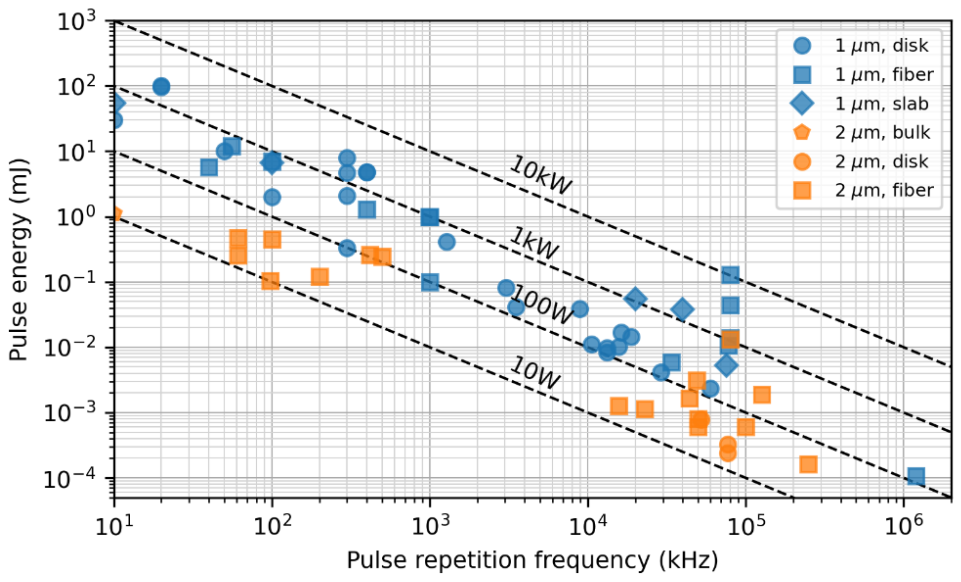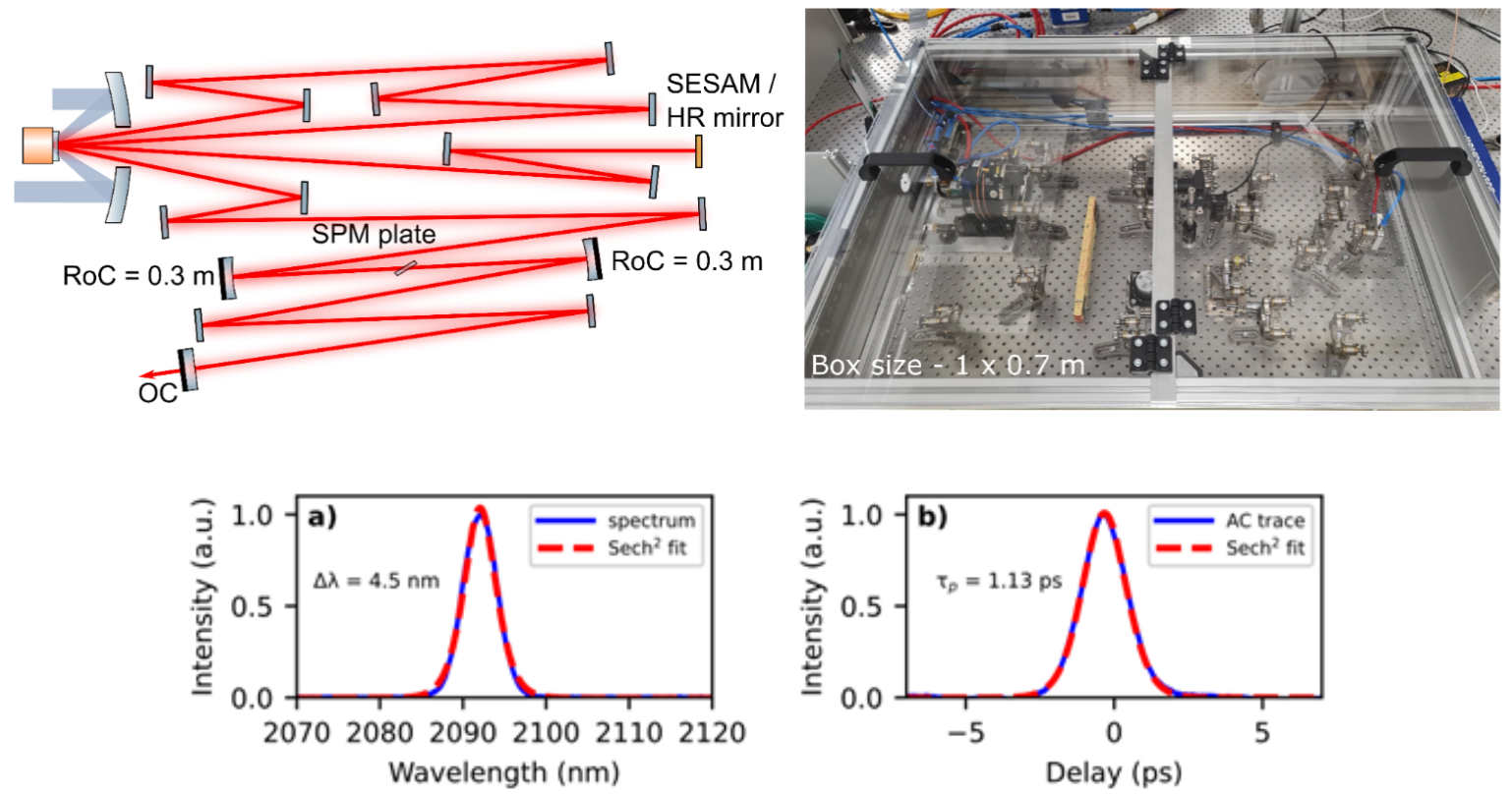| PREVIOUS PRESENTATION | BACK TO PROGRAM OVERVIEW | NEXT PRESENTATION |
Advanced 2.1µm femtosecond laser technology for improved conversion to the THz region
Sergei Tomilov, Mykyta Redkin, Yicheng wang, Weichao Yao, Anna Ono Suzuki, Clara J. Saraceno
Ruhr University Bochum, Germany
Ultrafast lasers are ubiquitous front-end systems for generating short Terahertz transients, and are thus essential tools in progressing THz science and technology. However, so far, most driving lasers have concentrated on commercially available technologies, most dominant ones being Ti:Sapphire lasers and Er-doped fiber lasers, with their well-known limitations in average power. More recently Yb-lasers emitting at around 1030nm with high average power have emerged also as an alternative for increasing the overall average power of pulsed THz sources.
In this context, many Terahertz generation schemes could greatly benefit from longer driving wavelengths with comparable performance to the more well-established laser systems. For example, they allow in many c(2) materials to reduce the impact of multi-photon absorption, as well as enable to reach high conversion efficiencies in two-color plasma sources, thanks to a stronger ponderomotive force [1][2]. More generally, long-wavelength lasers are also desired for reaching high photon energies up to soft X-rays in high harmonic generation and for reaching mid-IR light using various nonlinear crystals that are not transparent at the traditionally used wavelengths. In this goal of improving the performance and coverage of secondary sources, the 2-3µm wavelength region is being currently heavily explored in the laser community.
Traditionally, high-power ultrafast sources in this wavelength region are restricted to complex and inefficient parametric conversion stages, allowing to reach tens of watts of average power, using pumps with several hundreds of watts based on Yb systems in most latest state-of-the-art lab developments [3].
A much more elegant and simple approach is to use gain media directly emitting in this wavelength range for high-power oscillators and amplifiers. As shown in Fig. 1, many advances have been realized in bulk and fiber-based amplifier systems in this wavelength range. Some remarkable achievements in the wider area of high-power 2 µm ultrafast lasers are the demonstration of a Tm-fiber based chirped pulse amplifier systems, with an average power of 1060 W at 80-MHz pulse repetition frequency, corresponding to a pulse energy of 13.2 µJ [4]. Nevertheless, compared with ultrafast lasers in the 1-µm wavelength range, the average power of 2 µm ultrafast lasers are at least one order of magnitude lower as show in Fig. 1, showing large potential for further progress. In particular, very few results have been achieved in this wavelength range with disk lasers -both oscillators and amplifiers- therefore representing an area of unexplored potential in ultrafast source development.

Figure 1: Comparison of state-of-the art of ultrafast lasers at 1µm and 2µm, including oscillators and amplifiers
In the context of the different emerging laser technologies for accessing this wavelength region, Holmium lasers are particularly attractive for power and energy scaling because they operate in a window of atmospheric transmission at 2,1µm; furthermore, Holmium operates as a three-level laser with very comparable thermal advantages to Ytterbium.

Figure 2: 50 W – 2 µJ thin-disk oscillator based on Ho:YAG emitting at 2.1µm, representing the highest power oscillator so far demonstrated in this wavelength region.
In this presentation, we will discuss the development of high-power 2 µm disk and bulk lasers, based on Holmium-doped materials and current challenges and application possibilities, with a focus towards THz generation using these sources. We will present a 50W Holmium femtosecond disk laser oscillator with up to 2µJ pulse energy [5] (Fig.2), as well as a novel broadband regenerative amplifier based on the new gain material Ho:CALGO, enabling multi-100µJ pulse energy with femtosecond pulse durations. We will discuss the different THz generation schemes where these novel sources are promising to enable high average power, high repetition rate THz sources operating with very high conversion efficiency.
References
[1] Koulouklidis, A.D., Gollner, C., Shumakova, V. et al. Observation of extremely efficient terahertz generation from mid-infrared two-color laser filaments. Nat Commun 11, 292 (2020). https://doi.org/10.1038/s41467-019-14206-x
[2] C. Gollner, M. Shalaby, C. Brodeur, I. Astrauskas, R. Jutas, E. Constable, L. Bergen, A. Baltuška, A. Pugžlys; Highly efficient THz generation by optical rectification of mid-IR pulses in DAST. APL Photonics 6(4): 046105. https://doi.org/10.1063/5.0037235
[3] J. Buss, M. Schulz, I. Grguras, T. Golz, M. J. Prandolini, and R. Riedel, “Femtosecond OPCPAs from UV to short-wave IR wavelengths for ultrafast dynamics experiments from condensed matter to atoms, molecules, and clusters,” in Ultra-fast Phenomena and Nanophotonics XXIV, M. Betz and A. Y. Elezzabi, Eds., (SPIE, San Francisco, United States, 2020)
[4] C. Gaida, M. Gebhardt, T. Heuermann, F. Stutzki, C. Jauregui, and J. Limpert, “Ultrafast thulium fiber laser system emitting more than 1 kW of average power,” Opt. Lett. 43, 5853 (2018)
[5] S. Tomilov, Y. Wang, M. Hoffmann, J. Heidrich, M. Golling, U. Keller, C. J. Saraceno, “50-W average power Ho:YAG SESAM-modelocked thin-disk oscillator at 2.1 um” – Optics Express 30, 15, 27662-27673 (2022)
